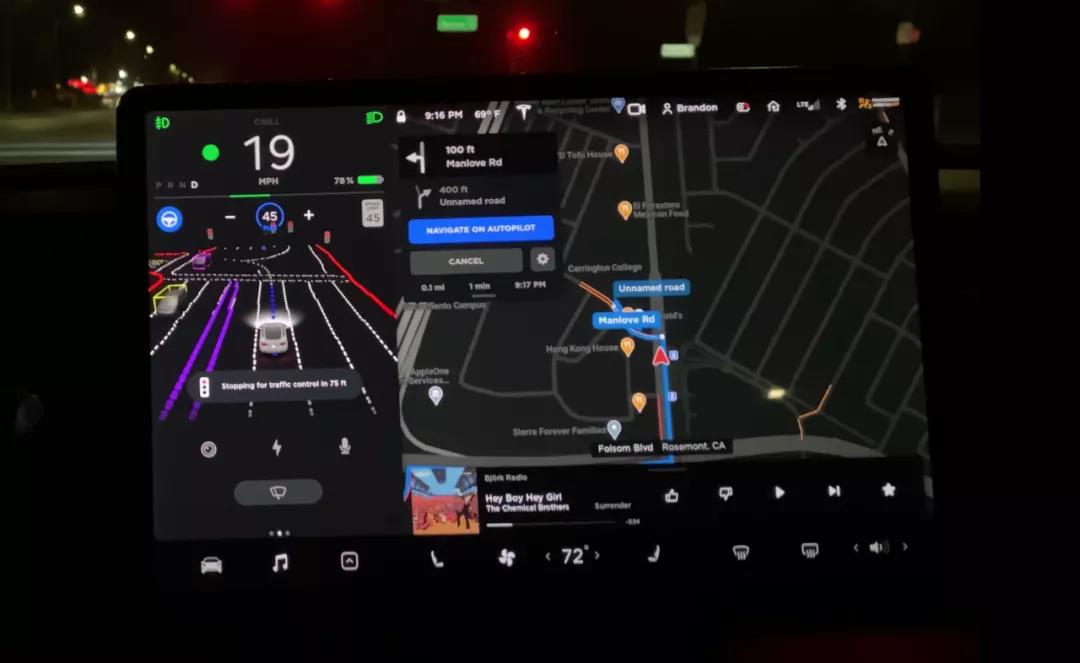I once quoted a saying in my friends circle: “A company with long-term value should invest in some core points that become more valuable over time. These cores should exceed the theoretical bottleneck that can be achieved by existing solutions, and then gradually catch up with and surpass the current situation through long-term accumulation, thereby creating enormous value.”
In this article, let’s talk about several major core points in Tesla’s capabilities that are worth long-term investment.
Automated Driving Assistance Technology
The most shocking experience for me after using the Model 3’s Automated Driving Assistance feature was how close automated driving technology is to us, and it really is within reach.

I work in the automated driving industry, and I have a certain judgment on the maturity of automated driving technology from a purely technical perspective. It is rational to say that automated driving technology is still far from being practically applied until an L4, L5 fully automated driving solution is available. In the short term, there is almost no hope.
However, from another perspective of user experience, if it is not possible to achieve L4, L5 level automated driving, is there any value in achieving L2, L3 level automated driving? This is also a point that overturned my previous understanding. My answer is, yes, and the value it brings is not small.
Many times, judging whether a product is good or not is not accurate just by looking at it or reading articles. Only by trying it out for ourselves can we come up with a relatively accurate answer. So here I put aside all the technology and talk only about the experience and feelings, experiencing the product.
From the user experience point of view, Tesla’s current Automated Driving Assistance technology can be used at any road and any time, but when it comes to turning at intersections or when the main/secondary road switch, human intervention is still required.
I have observed carefully. The time spent on turning at intersections and switching between main/secondary roads is probably less than 10% of the actual driving time. So, does it mean that Automated Driving Assistance can be used during other times? Actually not, because there are some other uncontrollable factors on the road, and manual intervention is needed in the middle, such as unclear lane lines, other vehicles crossing the lines, and automatic overtaking cannot be used when the distance is too close.
Rationally speaking, the usage rate of Automated Driving Assistance for city driving can reach 50%-70%; while for long-distance trips involving highways, the usage rate can reach 80%-90%.
The following figure shows the actual usage of Automated Driving Assistance recorded from a non-professional and non-rigorous user experience standpoint:
Full run time: 122 minutes / Automated Driving Assistance was used for 105 minutes / Manual driving for 17 minutes
The usage rate of Automated Driving Assistance on highways is about 86%.
With such a high usage rate of autonomous driving assistance, it means that the universality of this technology is already quite good. The actual use of Tesla has shown that they could do better, such as the city traffic light recognition that is currently being optimized and the new FSD Rewrite Beta version, both of which give confidence that this technology will continue to improve in the future.
In my opinion, if we were to give a fair assessment, Tesla’s autonomous driving assistance technology is a significant function that can free drivers from having to continuously and intensively focus on driving throughout the entire journey. Instead, it allows them to focus intermittently with low intensity, taking turns to drive.
The long-term focal point of this business is that this is one of the few functions that can truly affect Tesla’s repeat purchase rate. A valuable system will make people increasingly reliant on using it, and the experience of autonomous driving assistance has convinced me that it has this potential. Now, driving a car without this system makes me feel slightly uncomfortable. Additionally, I definitely would not want to drive long distances without this system.
Possibility of long-term development towards L5 autonomous driving
If Tesla’s autonomous driving assistance technology is a core technology, then the long-term evolution of this core technology should also be of concern, such as its potential for enhancing its applicability and stability.
Furthermore, as this technology evolves, it will bring Tesla another, even greater point of value – the possibility of evolving towards L4 and L5 autonomous driving. As mentioned earlier, it may not be possible for us to judge when L4 and L5 technologies will mature, or what specific technological routes will be taken in the future.
Therefore, we will not make any qualitative judgments here, but instead, focus on Tesla’s concrete actions to analyze their potential for evolving towards L4 and L5.
From the design of the sensors, we can see that Tesla follows a pure visual path for autonomous driving, which is different from the mixed visual path and LIDAR approach adopted by the majority of other autonomous driving technology companies.
To be precise, Tesla uses cameras, millimeter-wave radar, and ultrasound radar. Other autonomous driving technology companies use LIDAR, cameras, millimeter-wave radar, and ultrasound radar.
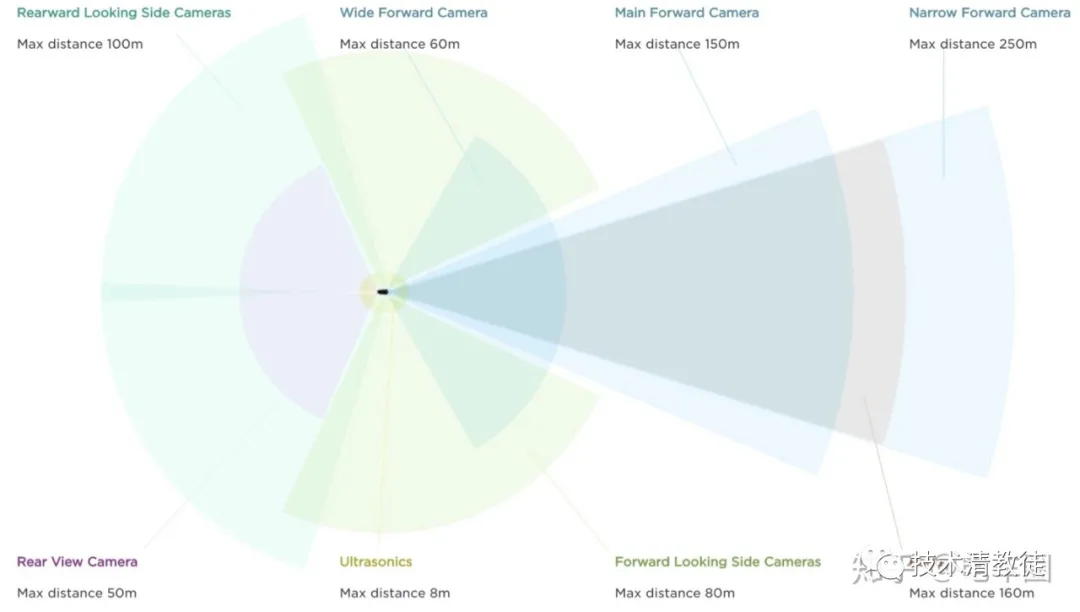
VS
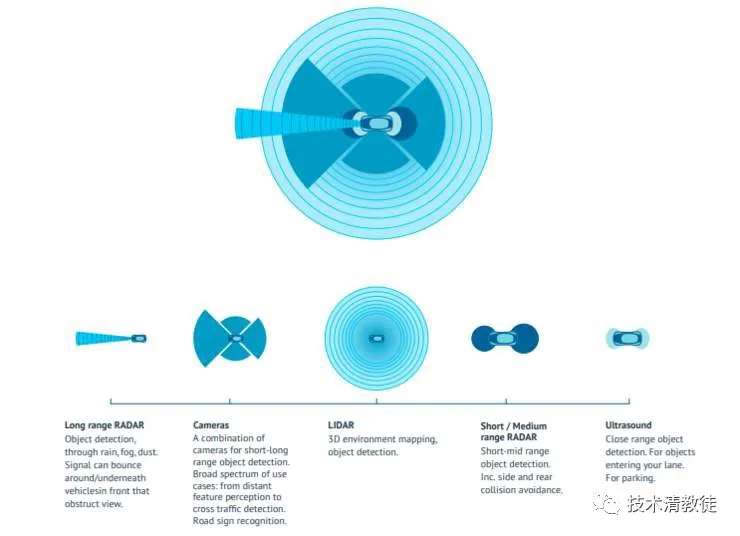 From the perspective of positioning technology, Tesla uses GPS combined with real-time generated local maps for navigation, while most other autonomous driving companies use GPS combined with high-precision maps. The difference lies in the fact that high-precision maps need to be collected and input in advance.
From the perspective of positioning technology, Tesla uses GPS combined with real-time generated local maps for navigation, while most other autonomous driving companies use GPS combined with high-precision maps. The difference lies in the fact that high-precision maps need to be collected and input in advance.
In fact, Tesla has its own set of technical approaches for autonomous driving. Tesla believes that if technology evolves according to the way humans drive, L4 and L5 level autonomous driving can eventually be achieved. Therefore, both sensor design and positioning technology that Tesla uses are based on a “human-like” approach.
When driving, humans rely on their “eyes” to see the road, so Tesla uses “cameras” to recognize the environment. Furthermore, when people drive from point A to point B, they usually use GPS on their phones, and then combine GPS instructions with road signs to confirm the next steps when approaching intersections.
So Tesla also uses GPS and generates local maps using cameras when approaching intersections to determine the next path. Tesla’s flagship technology is essentially based on a “human-like” approach.
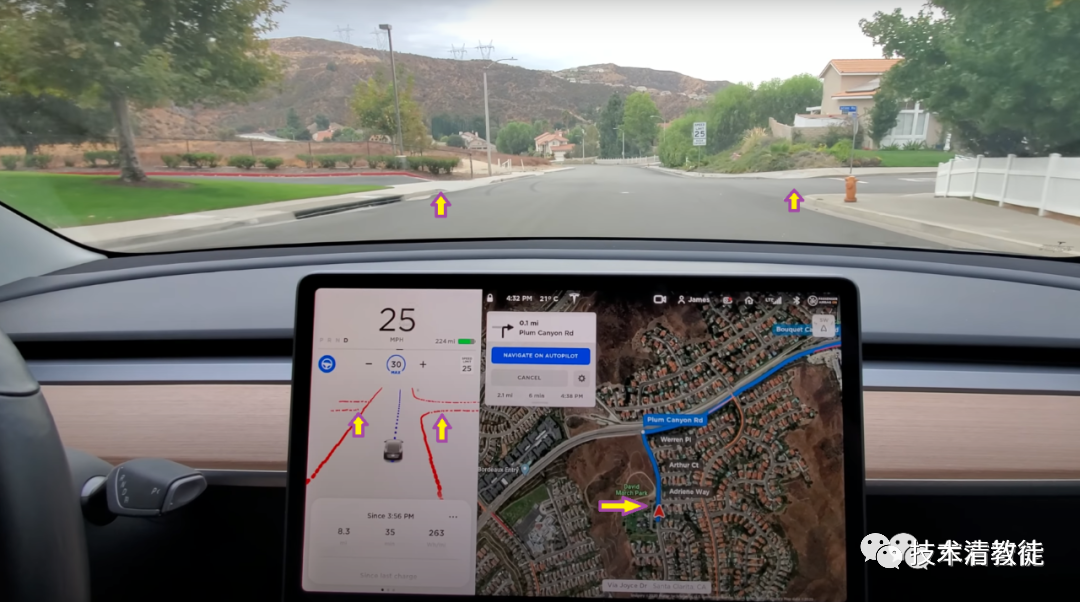
VS
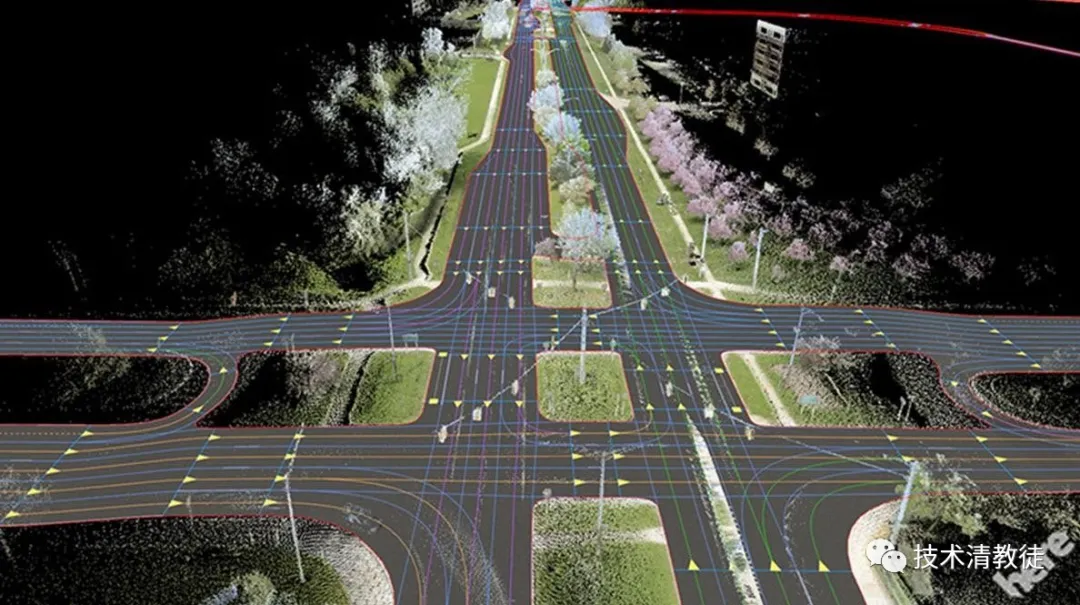
Can Tesla’s technical approach gradually reach L4 and L5? Before answering this question, let me talk more about how Tesla uses this technical approach to improve its autonomous driving assistance technology.
What follows may be tentative and may deviate from reality or definition, as my understanding of AI is currently at a very basic level. I am constantly learning and updating my knowledge, so please bear with me if there are any mistakes.
The development of artificial intelligence has gone through several stages, from the earliest “symbolism,” which was mainly based on human analysis of data and then coding rules for machines to execute. This required a human interpretation of the problem, and then summarizing a set of rules into code. Because problems needed to be analyzed and then written into code, the application scope for artificial intelligence was limited, and this stage encountered bottlenecks.
With the improvement of hardware computing power and methodology, the next stage began, with the mainstream represented by “connectionism,” which is essentially machine learning. As the name suggests, machines learn the rules from data and then execute them on their own. Because machines can summarize the rules themselves without requiring human analysis of problems, the scope of artificial intelligence applications quickly expanded in this stage.The mode of deep learning extends that of machine learning by increasing the efficiency of this mode, increasing the number of levels in machine learning, and using a large amount of data for learning. This can solve more problems and improve the accuracy of problem solving.
At this stage, the application scope of artificial intelligence can be expanded to some more difficult scenarios, such as automatic driving, natural language understanding, and so on.
From a less rigorous perspective, the core of the evolution path of artificial intelligence technology above is to use a large amount of data for training and learning. Data has always been an indispensable part of technological progress, and whether it is symbolicism, machine learning, or deep learning, the essence is to improve the ability to use data.
How Tesla uses data for learning
Training with camera data
The latest Tesla is equipped with a Tesla FSD HW3.0 kit, consisting of two sets of identical chipsets with a total computing power of 144 Tops. The chip computing power of many new carmakers using the MobileEye Q4 solution is only 2.5 Tops, which is 60 times less powerful than Tesla.
Firstly, it can be judged that the computing power of HW3.0 is very strong. Secondly, why design two sets of the same chips? In my understanding, on the one hand, it is designed as a hot backup for the operating chip, and on the other hand, it is designed to record and analyze data during use.
Recording and real-time analysis of data should also consume a lot of computing resources. In order not to squeeze the resources of the operating chip, a parallel system is used to do analysis and operation.
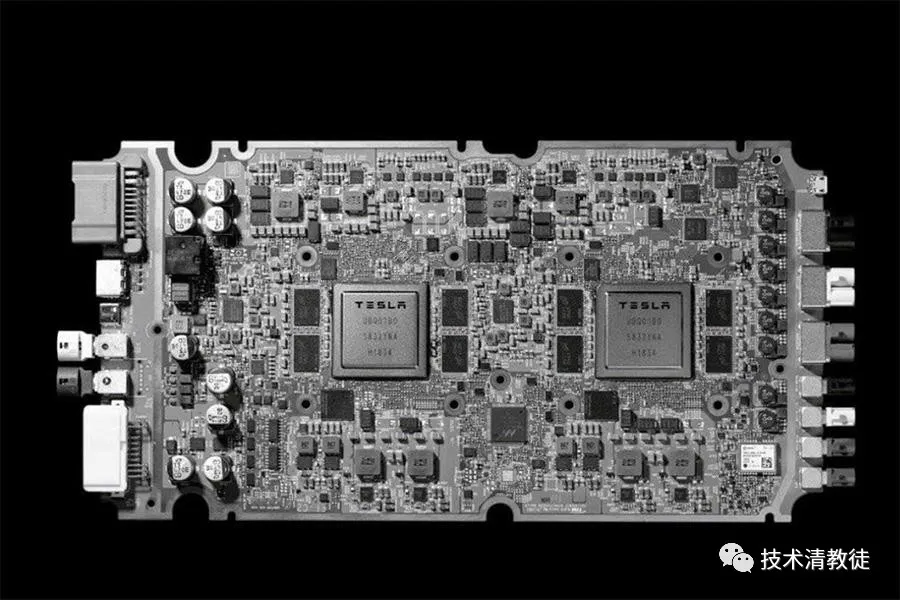
Based on the perception scheme mainly composed of cameras, Tesla needs to process a large number of continuous images in real time. Therefore, the two main computing chips in Tesla’s HW 3.0 are NPU chips. NPU refers to an embedded neural network processor, which adopts the architecture of “data-driven parallel computing”, and is particularly good at processing massive multimedia data such as video and images.

Tesla collects camera data to train its own system. As for whether it is trained locally or uploaded to the cloud for training, I think it is unlikely to be trained locally because local deep learning training occupies a very large amount of computing resources. Also, the trained data cannot be integrated into the current version without testing. So most likely, it will be uploaded back to the cloud for training, and local data collection and some feature simplification work will only be done to compress the size of transmission data.
Shadow learning mode### Dojo Deep Learning System
Elon Musk first proposed the Dojo Deep Learning System last year, which is a set of systems used for Tesla’s training data. However, little is known about it to the public and only limited information is available through Elon Musk’s brief remarks. It is said to be a supercomputer built specifically for deep learning, which can greatly improve the efficiency of existing data training and accelerate the advancement of automatic assisted driving technology. In my understanding, this system is the cloud training system mentioned above.
Tesla now faces a bigger problem of data overload. Although data is the most important part of improving technology, if there is too much data to handle, it will also limit the speed of technology improvement. Therefore, Tesla is also starting to think about solutions for this problem of excessive data.
To understand why data is overloaded, it is necessary to understand how data is applied in the process of machine learning. In most of today’s deep learning systems, the data actually needs to be manually labeled before being fed to the machine for learning. The quality of this manual labeling will affect the quality of the machine learning, and if the entire learning process inevitably involves human labor, it means uncertainty in quality and speed.
If manual labeling can barely meet the requirements when the total mileage of Tesla vehicles reaches 10 million miles, then when the mileage reaches 100 million miles, it is almost impossible to manually label all data, not to mention that Tesla accumulates approximately 5-10 billion miles of data every year now.
Tesla’s current solution is to develop an Operation Vacation autonomous labeling technology to achieve automated labeling of large amounts of data.
At the same time, Tesla has also limited the amount of data training uploaded, only uploading abnormal data for special training. But whether Operation Vacation can successfully build, this question is currently impossible to answer, because automated labeling should be very difficult. The essence of realizing automation is for this labeling algorithm to reach the level of “human” labeling, but doesn’t that look more like a paradox?
At present, Tesla’s huge data resources give it many basic advantages, and it should also be ahead of many companies in utilizing large amounts of data. However, how to further and more efficiently use this surging data has become a big stone blocking Tesla’s path to achieve smoother automatic assisted driving. But for now, as far as the current automatic driving assistance experience is concerned, it has already brought good value to users.It’s hard to determine whether the direction of achieving L4 and L5 autonomous driving without a steering wheel can be achieved by a technology route similar to that of humans. However, if we can constantly learn and approach the level of human driving, I believe that there is nothing that we cannot achieve. Therefore, I am more inclined to believe that it is possible to achieve L4 and L5 autonomous driving through this technology route. Furthermore, Tesla’s achievements in gradually approaching L4 and L5 will undoubtedly contribute to the further improvement of the L2 and L3 driving experience, further increasing Tesla’s barriers and long-term value. To be continued, the next article will continue to talk about Tesla’s other core capabilities.
This article is a translation by ChatGPT of a Chinese report from 42HOW. If you have any questions about it, please email bd@42how.com.
